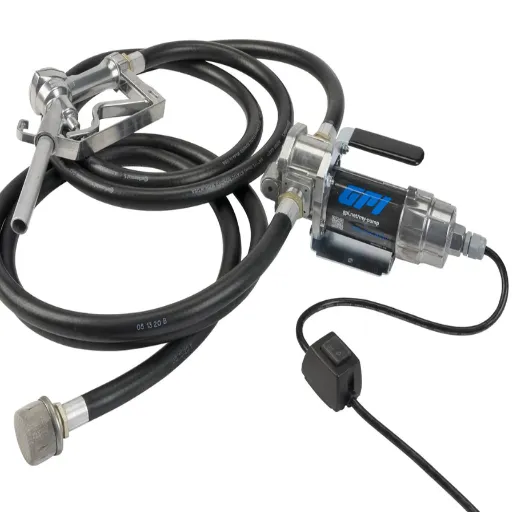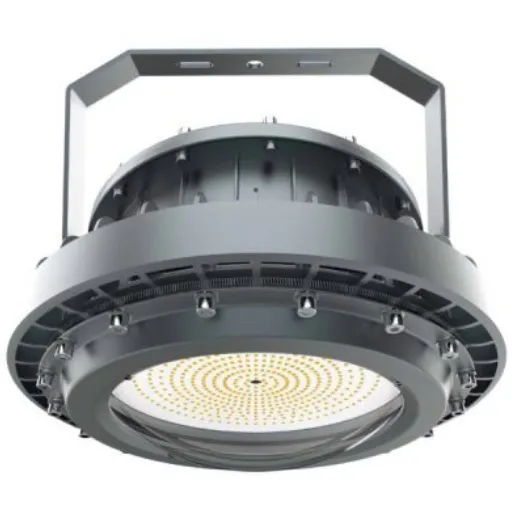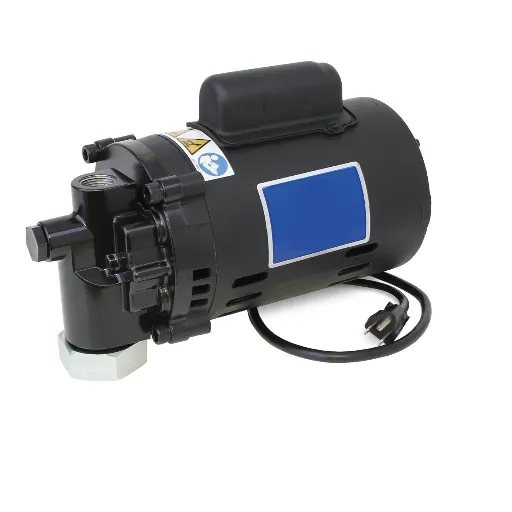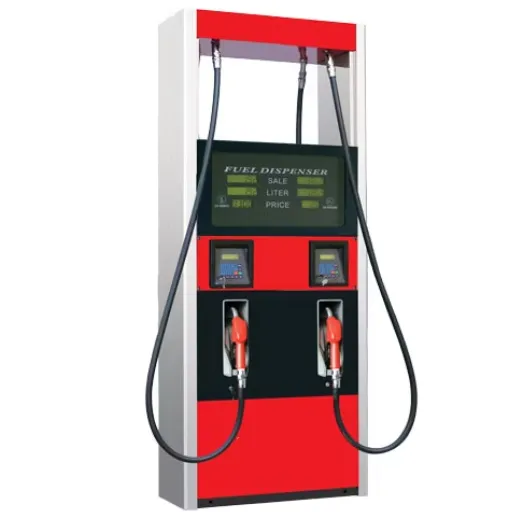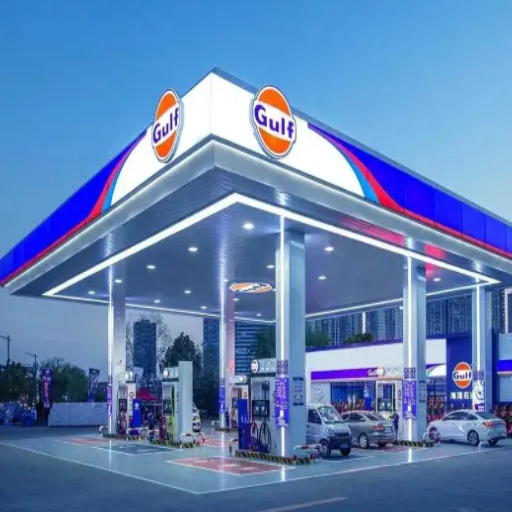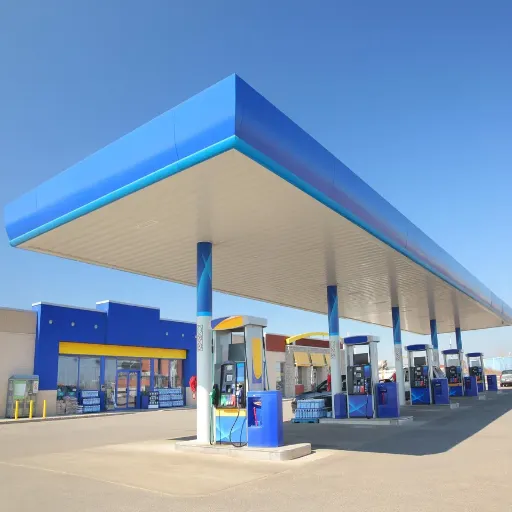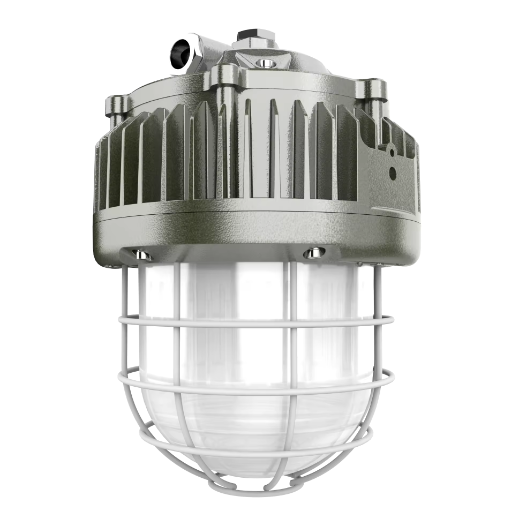The very crux of the fuel dispenser lies in its ability to ensure efficiency, reliability, and accurate fuel management. High reliability in dispensing solutions, whether one is managing a dynamic gas station, industrial area, or commercial fleet, increases one’s potential to save time and money to streamline his/her operations. This blog tries to dive into the world of fuel dispensers, pointing out the features that the customer should consider while making decisions and identifying their own needs, plus the benefits a high-grade solution will give them. Together, let’s delve into the world of possibilities on the market today, so you are well-equipped in the decision-making process to bring a smooth and hassle-free fuel management.
Understanding Fuel Dispensers
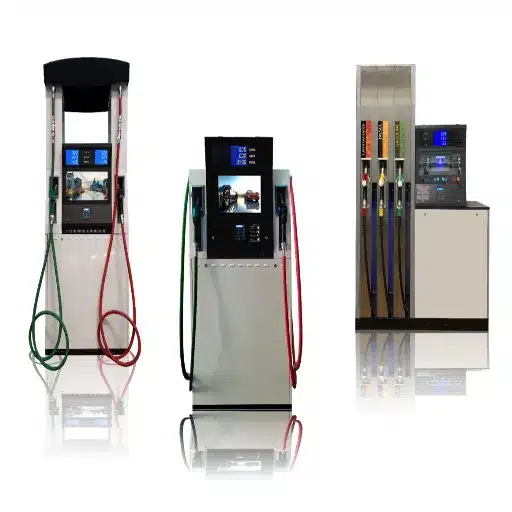
Fuel dispensers are designed so fuel can be safely and efficiently pumped from a storage tank into vehicles or equipment. They consist of components such as a pump, hose, nozzle, and meter, all ensuring that the amount of fuel dispensed corresponds to the amount entered. Modern fuel dispensers often include user interfaces that are easy to operate, built-in safety mechanisms, and technology for tracking consumption. These machines are therefore used to administer fuel distribution in gas stations, commercial fleets, and industrial activities. A good quality fuel dispenser guarantees accurate delivery, reduction of waste, and hence an increase in efficiency.
What is a Fuel Dispenser?
Obviously, in layman’s terms, a roadside pump delivers some sort of liquid fuel into a vehicle equipped for gasoline, diesel, ethanol, or CNG. Key components include a pump, hose, nozzle, and built-in meter so that the exact quantities may be measured and delivered. The latest in fuel dispenser technology comes with wonders like LCD screens, cards, e-wallets, and contact options, or some form of cashless convenience efforts.
Market analyst reports declare that the global fuel dispenser market was worth more than $3 billion a few years back; with steady expansion is anticipated to continue within the next 10 years due to ongoing infrastructure setups and integration of alternative fuels such as hydrogen and EV charging capability.
In relation to the market, an urge for greater efficiency and innovation can be noted. The systems thus integrate automation and IoT (Internet of Things) capabilities for remote monitoring and data collection toward operational management. The good age specifications included would also bestow value to the operation of modern dispensers; these include emergency shut-off systems, spill prevention technology, and advanced filtration. Because the whole world today prioritizes sustainability, contemporary dispensers tend to play a big role in reducing environmental impact, thus falling to be a crucial part of the energy distribution process.
Types of Fuel Dispensers
Fuel dispensers are primarily categorized on the basis of the type of fuel that they dispense and the technology employed within. The major types are described below:
Petrol and Diesel Dispensers
These dispensers are commonly found in gas stations. They are designed to dispense traditional fuels like petrol and diesel efficiently, following safety standards. The advanced types have vapor recovery systems that reduce emissions.
CNG Dispensers
Compressed natural gas is dispensed in these stations. They operate at very high pressures. Safety features are incorporated to make them foolproof. These stations mainly serve vehicles fueled by CNG, which is cleaner than other fossil fuel alternatives.
Hydrogen Fuel Dispenser
The hydrogen dispenser serves hydrogen vehicles and possesses technology enabling ultra-high pressures to be handled. The temperature and safety controls must be exact for the dispenser to fuel reliably.
Electric Vehicle Charger
As these chargers serve the demands of the rapidly increasing electric vehicle population, they have found a place in the modern filling station. They may be anything from standard chargers to high-speed charging stations that provide fast and efficient charging.
Biofuel Dispenser
Used for such biofuels as ethanol or biodiesel, they are built to withstand the chemical characteristics of bio-based fuels, ensuring a longer working life while offering a reduction in carbon emissions.
Each fuel dispenser type meets the various fueling requirements of present-day vehicles and supports the ongoing renewal toward a sustainable energy paradigm.
Components of a Reliable Fuel Pump
A trustworthy fuel pump contains important parts that give it an efficient and long service life:
Pump Motor
The pump motor is the heart of the fuel pump machinery, drawing the fuel from the tank and supplying it to the engine. Contemporary fuel pump motors are of precision engineering and provide constant flow rates while consuming less energy. Good motors are usually a brushless design, appealing to reliability and less maintenance.
Impeller or Rotor
An impeller or rotor is a rotating mechanism within the pump that provides pressure that aids the flow of the fuel. Such advanced designs as turbine-style impellers tend to provide a smoother fuel delivery and are usually quieter compared with the old vane designs.
Pressure Relief Valve
If pressure build-up exceeds the limits, this mechanism prevents further escalation, thereby protecting the fuel line and engine components. Pressure-relief valves are very carefully calibrated to keep the operating pressure at an optimum level to maximize the safety of the fuel delivery system.
Fuel Filter
The fuel filter cleans the fuel by removing contaminants and debris so the engine can work well to maintain its performance. The recent fuel filters use high-efficiency materials capable of stopping even microscopic particles that would otherwise have shortened the life of the injectors and pumps.
Check Valve
The reverse flow of fuel is prevented by the check valve so that the system maintains its pressure during vehicle idling. This feature contributes to enhanced startup performance and reduces wear on the pump motor during powering up.
Housing and Seals
The housing encloses the fuel pump components and protects them against damage and exposure to the environment. Good-quality pumps have a housing made of corrosion-resistant materials, usually stainless steel or composite plastics. Proper sealing is essential to prevent fuel from leaking into the environment and to keep the system from losing its pressure integrity.
Sensors and Electronic Control Unit(s)
The newer fuel pump systems incorporate sensors and PCUs that monitor fuel pressure, flow rates, and temperature. These sensors and PCs empower real-time parameter changes to enhance performance and comply with the strict emission standards.
Fuel pump technology has progressed such that the latest design drastically improves fuel efficiency and lessens environmental degradation. Reliable fuel pumps ensure smooth vehicle performance, paving the way for environmentally sustainable means of transportation.
Choosing the Best Fuel Dispenser
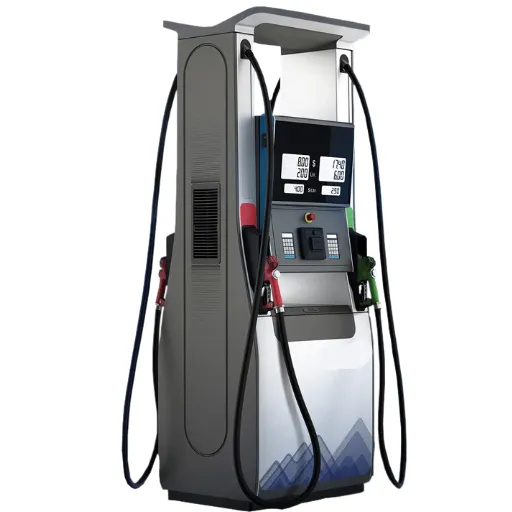
A fuel dispenser may be chosen about compatibility, efficiency, and reliability. This consideration must ensure that the dispenser is compatible with the desired fuel type, be it gasoline, diesel, or alternative fuels. Models claiming to be highly efficient are given preference to reduce the wasting of fuel and to lessen additional costs. They should select brands that are known to be reliable when it comes to safety, durability, and maintenance. Also, check for certification to ascertain industry standard and environmental regulation compliance.
Factors to Consider When Selecting a Fuel Dispenser
Advanced Technology and Features
Viable options available for this type of dispenser are diverse regarding advanced technology, all of which serve to enhance the dispensing experience. Some fuel dispensers offer digital displays that give a clear view and real-time accounting of quantity and cost. Transaction means may be admitted also in many models, all accepting mobile wallets and contactless payments to smooth out and create more opportunities for customer convenience.
Smart dispensers, according to industry specifications, operate with IoT: remote monitoring and predictive maintenance along with performance analytics that reduce downtime by around 20% and increase operational efficiency.
Additional alternatives include those that operate on a touchscreen interface with software capable of customization; this gives the operator some flexibility in inventory management as well as personalized promotions at the pump interface.
Environmental Considerations
Bigger regulations for anything concerning emissions and environmental impact position the selection of a dispenser in alignment with sustainability goals. Low-emission dispensers can go a very long way towards reducing the carbon footprint of the fueling station.
Research showed that systems for vapor recovery can achieve the capture of up to 95% of fuel vapors, thus not allowing the pollutants into the atmosphere. Being environmentally friendly, these dispensers consume 15-20% less energy compared to old ones, thus cutting operational costs along with supporting bigger environmental benefits.
Thus, it also helps reduce waste by selecting dispensers that are durable and have a long life with recyclable materials.
Security and Compliance
Safety and security features ensure compliance and furnish protection against fraudulent occurrences. Equipped with extremely advanced anti-skimming devices, high-tech fuel dispensers protect confidential payment data and, in fact, can reduce the chances of fraud by as much as 40%. Compliance with international standards such as EN 13617-1 or UL 428 is necessary for the dispenser to be considered safe to use and to operate correctly. Maintenance inspections and certifications should also be of equal importance for the upkeep of consistent performance and the prevention of any hazards.
Industry-Leading Brands
When discussing the leading dispenser brands, it would be necessary to focus on aspects such as innovation, reliability, and conformance to world standards. These companies lead the industry, offering state-of-the-art technology with a trustworthy name: Gilbarco Veeder-Root, Wayne Fueling Systems, and Tatsuno.
Gilbarco Veeder-Root
Gilbarco stands notable for integrating payment security solutions with a smooth user-interface operation, making it a very trusted brand worldwide. Their robust and advanced dispensers and state-of-the-art solutions carry high-precision measurement, digital payment integration, and cloud-based management systems worldwide, with the utmost standards adhered to safety and environmental norms.
Wayne Fueling Systems
Wayne Fueling Systems offers green dispensers that are equipped with the IoT for data and operational efficiency. Wayne is a well-known brand that makes eco-efficient fuel dispensers, standing for sustainability and ease of use. These often include features such as contactless payments, intuitive interfaces, and technology to help prevent fuel loss. Wayne dispensers have earned a reputation for being durable and smartly engineered.
Tatsuno
Tatsuno is world-renowned for precision engineering and conforming to international standards on safety, thus attaining high reliability and durability. Tatsuno is a standout name recognizable for high engineering in fuel dispensing technologies. These machines are machines of precision, energy efficient, and have advanced safety mechanisms. Tatsuno dispensers are usually employed in heavy-traffic retail points, being consistent performers under intensive working conditions.
Tokheim
Tokheim stands for quality in the dispensing arena, offering the highest level of reliability and efficiency for various fuel types. Their slight design and modification aim at smooth operations and end-user comfort while improving security features, thus attractive to fuel retailers. The dispensers are extremely reliable for long-term usage with very few maintenance problems.
Bennett Pump Company
Trusted by fuel retailers, Bennett Pump Company stands behind the manufacture of rugged yet easy-to-use dispensers. Specialties include customizable payment systems integration, as well as solutions tailored to meet regional requirements.
On comparison between brands, it appears that each offers something unique that would suit operational needs from different standpoints, thereby establishing them as landmarks in the industry.
Compatibility with Existing Systems
Among many things that are to be considered while evaluating a fuel dispenser system is compatibility with existing buildings. Prominent brands, such as Wayne Fueling Systems, Gilbarco Veeder-Root, and Tatsuno, put integration above all else in their product design. Wayne dispensers feature a modular design, which permits the user to install or integrate them simply with almost any configuration. Gilbarco Veeder-Root flexibly offers software interfaces, so their systems can meet any back-office system or payment platform. On the other side, Tatsuno tries to make solutions specific to operational requirements to fit compatibility with either legacy or advanced technology. The emphasis that these brands have on these features ensures that upgrades can be carried out in a manner that will not seriously cause inconvenience or costs to the business.
Features of Reliable Fuel Dispensers
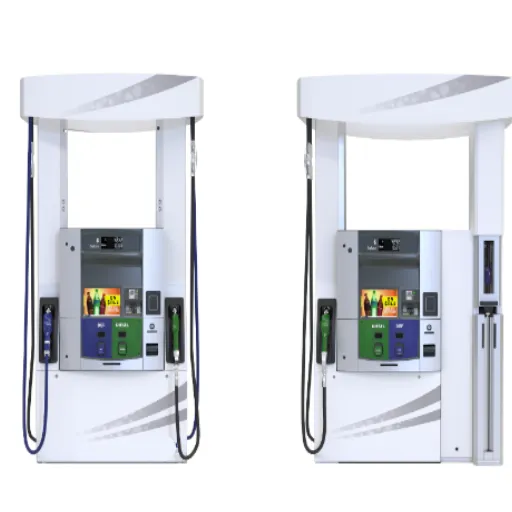
| Feature | Description | Benefits |
|---|---|---|
| Accuracy and Precision | Fuel dispensers with accurate measurement of fuel | Prevent losses while creating trust with customers |
| Durability | Made from high-quality materials and structurally sturdy | Withstand harsh environmental conditions and long usage periods |
| Advanced Technology | Modern software for payment systems, automation, and data management | Operational excellence and improved efficiency |
| Ease of Maintenance | Designed for easy maintenance with accessible parts | Straightforward diagnostic tools and reduced downtime |
| Safety Standards | Respect the highest safety standards | Prevent possible risks such as leaks and fire hazards |
| Customizability | Can be customized to suit specific business requirements | Great advantage for tailored solutions |
When these characteristics apply, fuel dispensers can work reliably and efficiently with minimal downtime for smooth operations.
Seamless Operation and User Experience
Any machine, to operate efficiently, should always offer a seamless user experience. Modern dispensers should have interfaces that are intuitive to operators so that they can operate without any confusion. For instance, a typical interface has touch screens, crisp digital displays, and multi-lingual options, playing a big role in making fuel dispensers accessible to most users.
On the other hand, higher-end technologies also help by providing automated payments and real-time monitoring during the fuel dispensing process-lowering waiting times while producing more convenience for customers. Durable and reliable: an upkeep stoppage here and there, and an ill-performing fuel dispenser out there never helped good business. In essence, a double-barreled approach will serve well: while aesthetics give broad appeal, excellent user experience targets the practicality of both operators and consumers.
Enhancements in Fuel Pump Technology
Advancements in fuel-pump technology mainly focus on enhancing efficiency, accuracy, and environmental sustainability. The new fuel dispensers include finer, high-precision metering systems for measurement accuracy, ultimately promoting confidence amongst consumers and regulatory acceptance. The digital-based interface and touchscreen confer on the end user an enhanced application experience, including multilingual support and options for customization of the display.
Together with contactless payment systems and mobile app compatibility, the whole system has increasingly become a quick and convenient method to get things done and has been catering to this need. To the environment, for example, vapor recovery methods have been innovated to control emissions during refueling, so as to give us cleaner air to breathe. Then, with smart diagnostics and IoT integration, constant monitoring can be achieved, with predictive maintenance minimizing any downtime. Such breakthroughs further developed the fuel pumps in terms of upgrades and tied to any relevant contemporary world expectations of sustainability.
Maintenance and Support Considerations
In order to maintain the quality performance of the fuel pumps, carrying out some maintenance is a must. Through regular inspection and servicing, some sort of wear and tear during operation can be recognized before full operational failure occurs. Hence, ample preventive maintenance, which includes checks on the nozzle, hose, and dispenser meter, goes a long way toward improving operational life and efficiency. Also, employing smart diagnostics and IoT-enabled systems can provide real-time monitoring to identify and resolve issues swiftly. Whenever repairing or updating the pump, always employ qualified technicians and strictly follow the manufacturer’s recommendations. Lastly, keep a maintenance log and use this to track performance trends, which will later aid in pinpointing areas that need improvement.
Retail Fuel Dispensers in the Market
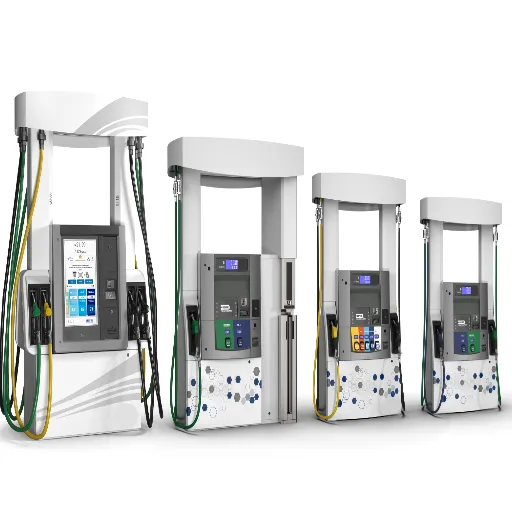
To dispense fuel into retail vehicles, the device must accurately measure and deliver the fuel, ensuring its ease of use for customers. More modern dispensers come with such enhancements as digital displays, payment options, and added safety features. Among today’s manufacturers of dispensers would be those that are interested in durable designs and ensuring that regulatory standards are satisfied, so that consumer needs will be met.
Seamless Integration with Fuel Stations
Modern fuel dispensers are developed to integrate seamlessly with the station infrastructure for operational efficiency and customer experience. Contactless and mobile payments are accepted, thereby streamlining the payment process. The dispensers are also equipped with software that helps keep track of inventory in real time so that the station owner can monitor fuel level status and prevent lengthy downtime. In conjunction with an IoT system and a centralized management system, predictive maintenance alerts can be given to reduce downtime. By incorporating modern technologies and friendly interfaces, retail fuel dispensers offer high functionality and reliability intended for the many offerings of a contemporary fuel station.
Customer Reviews and Ratings
The modern fuel dispensers at retail stations are almost always praised by customers for their ease of use, robustness, and advanced technology. Many customers cite the real-time payment systems and seamless mobile app interaction as their major convenience. From software reviews, dispenser manufacturers learned that the customers often praise the reliability of wind dispensers, with satisfação included in things like less maintenance requirements and accurate fuel dispensing. Station operators like how predictive maintenance alerts keep costs down, and, of course, IoT connectivity. Some customers have suggested that the software can be improved, or the documentation for support purposes could be enhanced for troubleshooting. In a nutshell, the comments underline a balance between innovation and reliability, with most users rating their user experience highly.
Innovative Fueling Solutions
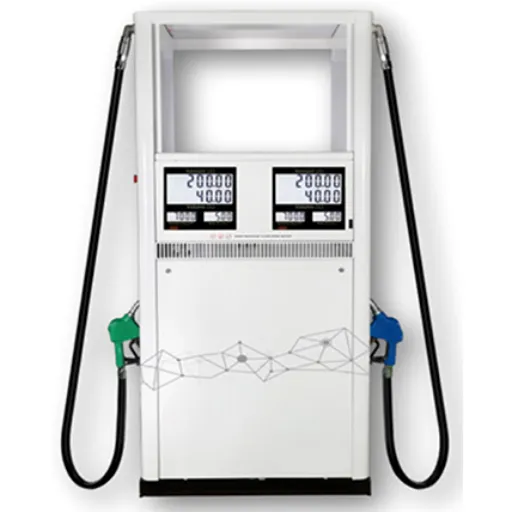
With innovative fueling solutions, however, numerous advantages exist for the station owners as well as the customers. Based on predictive maintenance and IoT connectivity, these solutions imply reduced downtime and operational costs. Inaccurate fuel measurement destroys customer trust, while seamless payment systems build the whole user experience along the way. Solutions for the stations also make it easier to manage and help optimize fuel consumption to meet sustainability targets.
Advancements in Fuel Dispenser Technology
Advancements in fuel dispenser technology are transforming the job of dispensing fuel by being equipped with the latest features focused on efficiency, sustainability, and customer convenience. Smart fuel dispensers use IoT connectivity for real-time monitoring and predictive maintenance to avoid unplanned downtimes and lower operational costs. The evolution of payment systems, localized contactless payment, and mobile app-enabled payment caters to the increasing demand for frictionless user experiences. Automation in fuel metering and calibration maximizes the accuracy and reliability of measurement, thus furthering consumer trust. These technologies contribute to the ecological basis for sustainability by optimizing fuel usage and providing for renewable energy integration, thus giving serious intent to the global pursuits in cutting down on carbon footprints.
Future Trends in the Fuel Pump Industry
The way I see it, the pump-fuel industry will continue to evolve with developments in renewable energy integration and smart technologies being at the core. Greater focus will be placed on infrastructure for not just electric vehicle (EV) charging, but also hybrid fuel dispensing systems to assist with the transition to alternative energy sources. Furthermore, the business will be fine-tuned through the application of digital technologies such as AI-powered analytics and IoT connectivity that will provide real-time insight for better operational management. These, in my view, would be the key trends shaping the subsequent phase of progress in the industry.
Encore: Leading the Way in Fuel Dispenser Innovation
Encore has set trends in fuel dispenser innovation through the integration of advanced technologies to win in a rapidly changing energy landscape. Present-day Encore dispensers support traditional fuels but equally encompass alternative energy solutions such as EV charging stations and biofuels. Being sustainable, Encore has given preference to energy-efficient designs and minimum environmental impact.
Operators get real-time data that allows them to make better decisions, less downtime, and enhance operational efficiency from such IoT-enabled features coupled with AI-based analytics. Encore has created a payment experience to is smooth for the users by investing in interfaces that promote speed, ease of use, and robust security measures. Encore redefines the parameters of innovation in fuel dispensing systems by keeping an eye on industry trends and potential future needs.
Reference Sources
1. Examining the Suitable Palliatives in Cushioning the Removal of Fuel Subsidy in Nigeria (2023)
2. CFD Study to Improve PV Cell Performance by Forced Air: Modern Design (2019)
3. Real World Renewable Hydrogen Transport (2020)
Frequently Asked Questions (FAQs)
What factors should I take into consideration when buying a fuel dispenser?
Several factors must be considered while choosing a fuel dispenser: availability of fuel options, flow rates needed for the high-flow of fuel, whether it supports your existing fuel management system, and compatibility with the other specific operational needs of your station. Then look for dispensers that can provide the advanced features for enhancing customer satisfaction and a seamless fueling experience.
How to ensure the efficient and smooth operation of a fuel dispenser?
In general, buy your fuel dispenser from reputed distributors, such as Dover Company, reputed for quality fuel equipment. Regularly maintain it, and ensure it is installed by certified professionals so that the dispenser serves your purpose without calling for downtime due to breakdowns.
What are the advantages of newer technology implementation in fuel dispensers?
Modern technology in fuel dispensers offers advantages such as more accuracy with flow meters, higher security features, and better integration with POS systems. These latest features would make fueling more streamlined and result in quicker fueling, which would definitely increase the overall satisfaction of your station customers.
Are there different models of fuel dispensers?
Yes, a number of different models of fuel dispensers are available to suit various operational needs. Whether for a retail gas station giving an elegant touch or a sturdier model for a truck stop, the dispenser must go well with the requirements of your station and the fuel management system.
Can you explain the installation of fuel dispensers?
The installation of fuel dispensers covers a wide range of steps-from site preparation to the actual placement of the dispenser within the forecourt, up to its connection with the fuel management system. Hiring a professional team for installation may be beneficial so as to guarantee safety regulations and ease of installation.
How would a fuel dispenser improve customer satisfaction levels at gas stations?
Keeping the time short in waiting queues and having a smoother fuel supply would enhance the customers’ overall experience. This could be through options for high-flow fuel and simplified interfaces that ensure smooth fuel dispensing-care for the customer side-so the customer’s battery is satisfied and likely to be coming back.
What are a few good fuel dispenser cost-saving options?
Some inexpensive choices include fuel-dispensing machines with good performance and essential features. Price must-fulfill-the-station-with-options dispensers, which means a balance must be set between pricing and options, so your station can acquire neither too high nor too low.
How do advertising features on fuel dispensers trickle into customer engagement?
Beautifully designed advertisements meant for fuel dispensers attract customers’ attention to promotions and fuel brand options. These graphic displays work towards making your station more visible and enticing customers into buying from special offers, leading to increased sales.
Considerations for enormous fuel-dispensing equipment?
When selecting fuel dispensing equipment, choose features that will guarantee the efficiency of the operation and also maintain safety for all involved, such as the reliability of flow meters and modern security systems. However, remember to consider the aesthetics of the dispensing machine: the more suitable it looks to the customer in relation to its surroundings, the more the customer will respect the business and feel content with the entire fuel dispensation experience.

